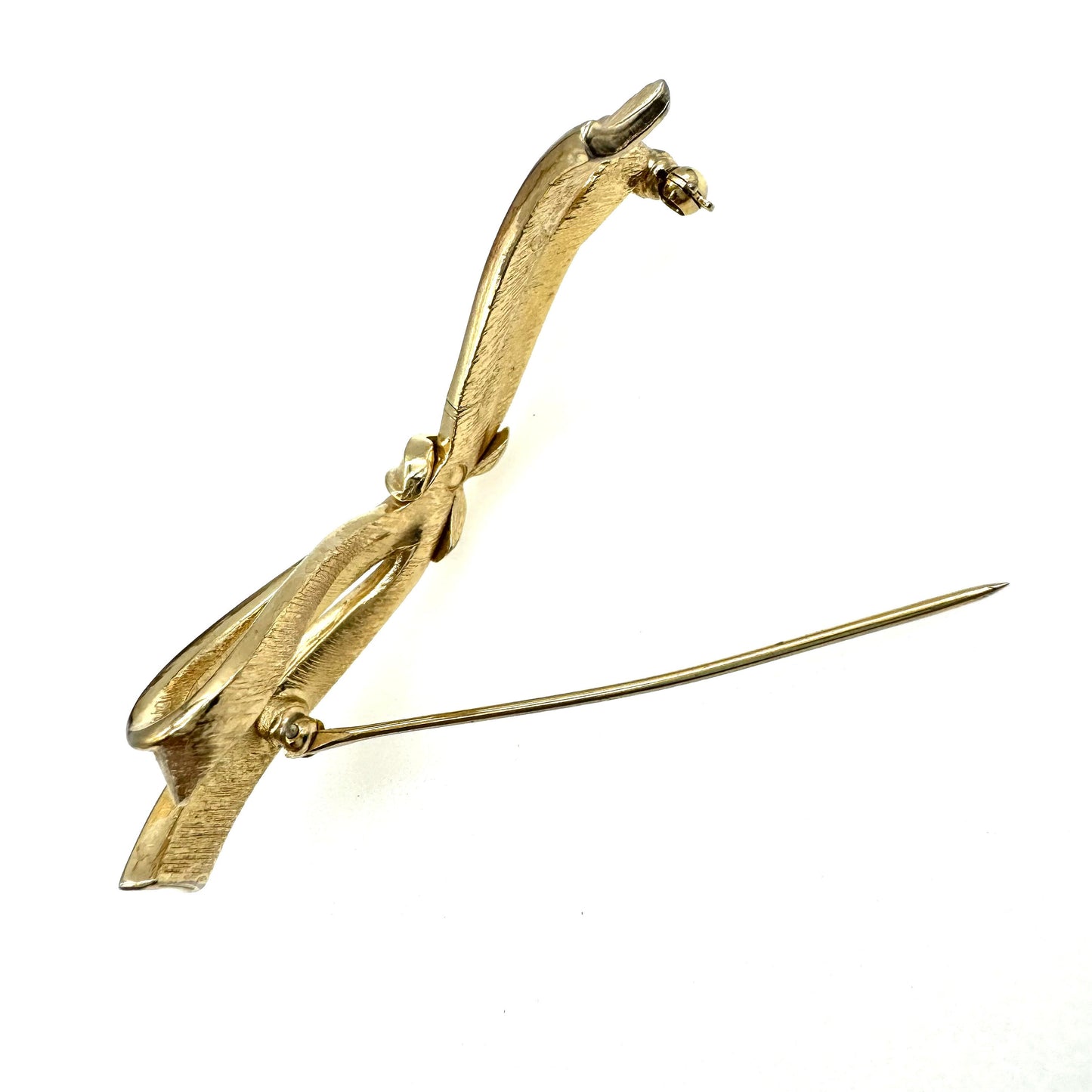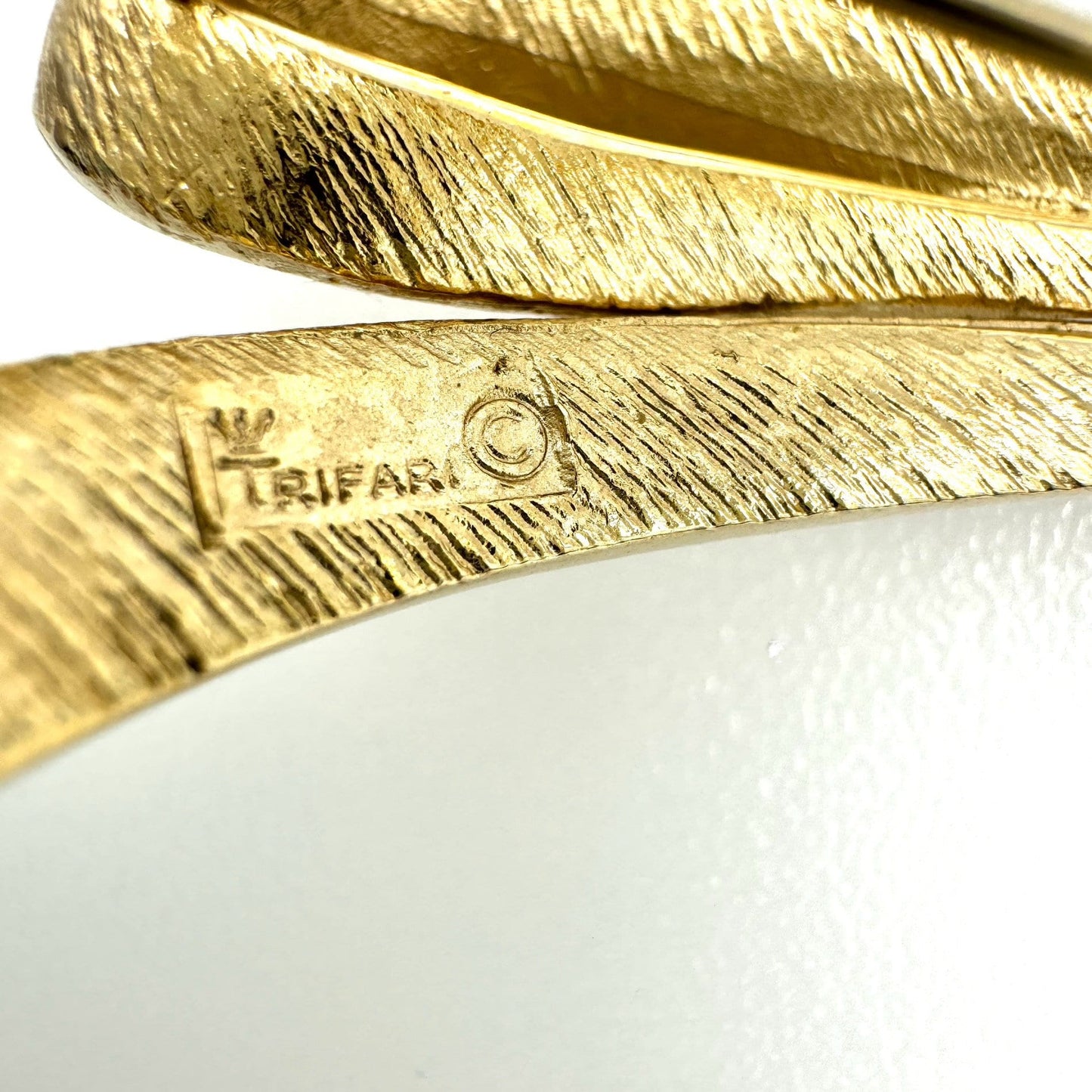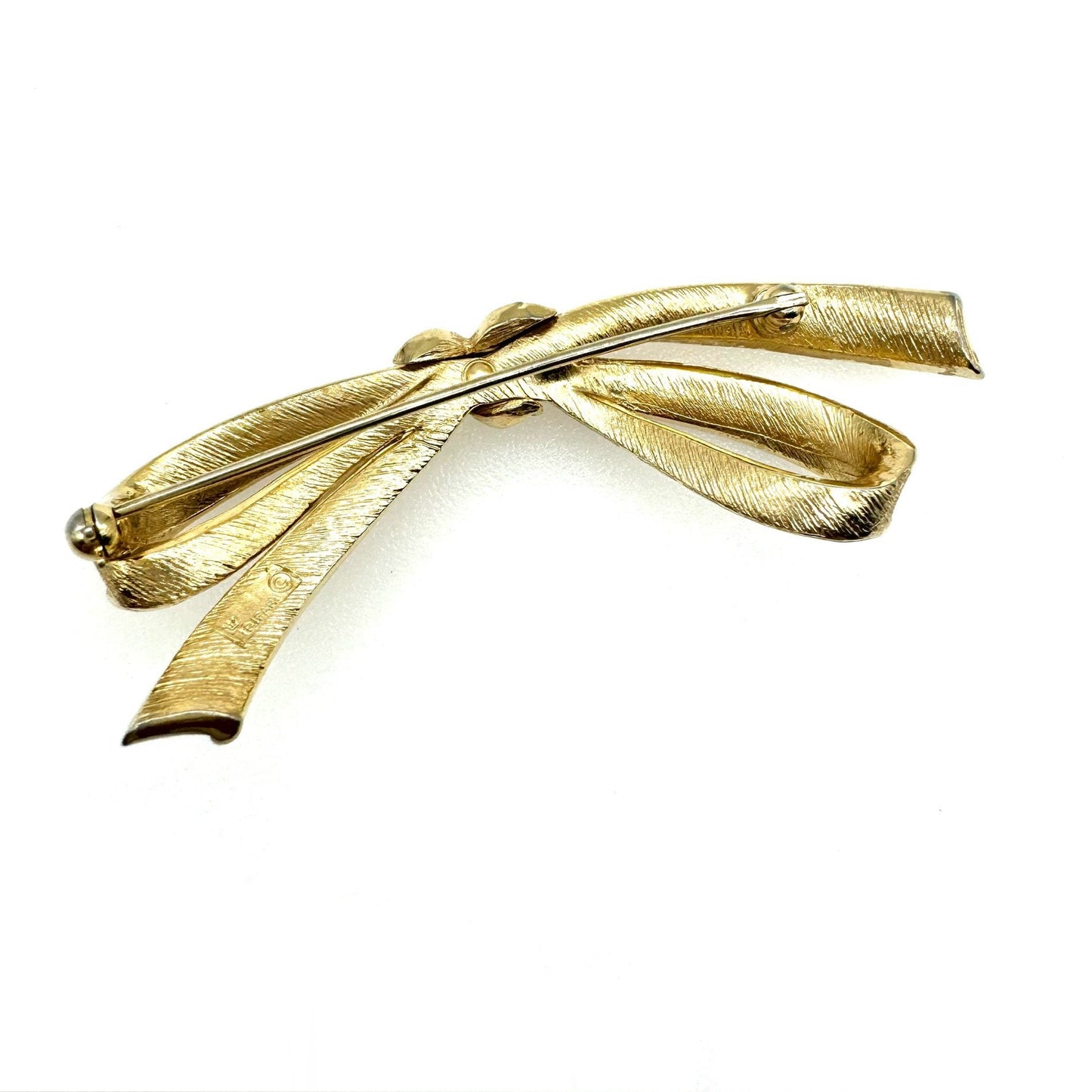Bramble & Lily
Crown Trifari Ribbon Bow Brooch
Crown Trifari Ribbon Bow Brooch
Impossible de charger la disponibilité du service de retrait
Crown Trifari Ribbon Bow Brooch
This elegant gold-plated ribbon bow brooch features a finely textured surface with smooth raised edges. Measuring 2.5cm high and 7cm wide, it weighs 14.7g and has a rollover clasp. The brooch is signed "TRIFARI©" with a crown above the "T," a hallmark used from 1955 to 1969.
The History of Trifari
Founded in New York in the early 1910s by Gustavo Trifari, a descendant of Neapolitan jewelers, Trifari initially produced hair accessories. In 1925, Gustavo partnered with Leo Krussman and Carl Fishel, shifting focus to costume jewelry. Their brand, originally called Trifari, Krussman, and Fishel (T.K.F.), was later shortened to Trifari, emphasizing its Italian heritage.
Authentic Trifari jewelry bears marks like "Jewels by Trifari," "TKF," or "Trifari," reflecting its era. A turning point came in 1930 with Alfred Philippe’s appointment as head designer. Philippe, a master craftsman with a fine jewelry background, elevated Trifari’s craftsmanship and materials, creating designs that mimicked fine jewelry. His contributions included delicate settings, hand-set crystals, and motifs inspired by florals and marine life.
Hollywood and Design Innovations
In the 1930s, Trifari collaborated with Broadway and Hollywood, crafting custom designs for actors and enhancing its reputation. Philippe introduced innovations like invisible stone settings, sterling silver, vermeil finishes, and faux materials such as imitation moonstone, chalcedony, and pearls. Notable creations include Trifari Crown brooches, introduced in the late 1930s. These brooches, featuring colorful cabochons or clear rhinestones, were so popular that Trifari added a crown to its logo in 1937.
In 1953, the Coronation Gems collection celebrated Queen Elizabeth II’s ascension, showcasing Trifari’s craftsmanship.
Wartime Adaptations and Post-War Success
During WWII, Trifari used sterling silver due to metal rationing, increasing costs but maintaining sales. After the war, the company introduced "Trifanium," a rhodium-plated base metal marketed as revolutionary. This successful rebranding made costume jewelry more accessible.
Trifari gained further prestige when Mamie Eisenhower wore a custom-designed pearl choker by Alfred Philippe to the 1953 inaugural ball. This set, which included a necklace, bracelet, and earrings, was replicated for the Smithsonian and Trifari archives. Eisenhower’s continued patronage solidified the brand’s status.
Legal and Corporate Evolution
In 1955, Trifari won a landmark copyright case against Charel, setting a precedent for costume jewelry makers to use the © symbol to protect their designs. In the 1970s, Trifari updated its logo, removing the crown and adopting a modern typeface. By the 1990s, the logo transitioned to plain text with a trademark symbol. In 1994, Trifari joined the Monet Group, later acquired by Liz Claiborne in 2000.
Today, Trifari is celebrated for its timeless designs and craftsmanship, with vintage pieces like this ribbon bow brooch cherished by collectors.
This beautiful piece of jewellery began its journey many years ago and may have some very minor imperfections collected along its travels. By purchasing this piece you will investing in a brand new chapter of its story as well as making a positively conscious choice on sustainable fashion. Vintage jewellery for the beautiful you on our beautiful planet.
Brand: Crown Trifari
Category: Brooches
Material:
Colour:
Style: Bow
Features:
Size:
Share












